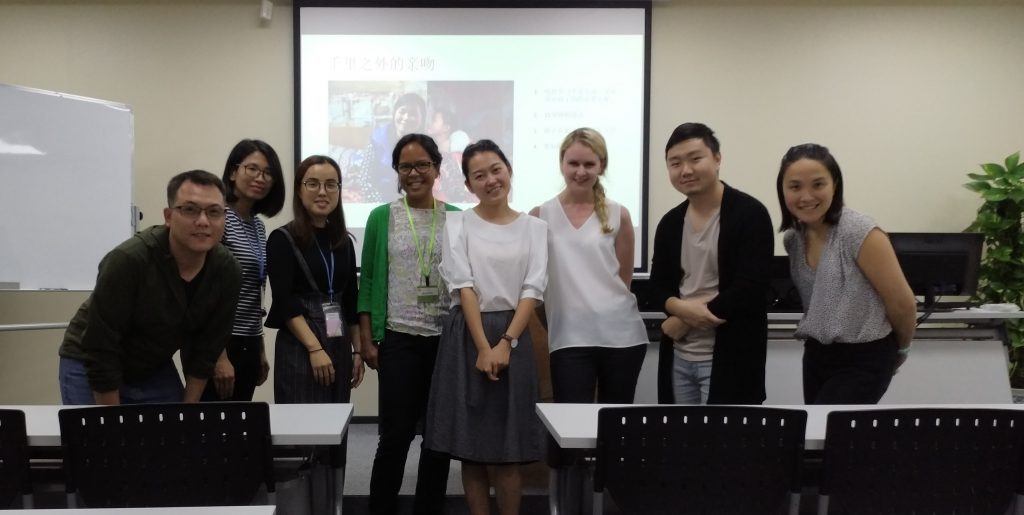Supply chains are the backbone of our global economy; they deliver the goods and services we use around the world, spanning geographic, industry and cultural boundaries. As these interconnected webs of supply and demand become more complex, how they are managed has major implications for the well-being of the workers that produce those goods, as well as society and the environment at large.
Consumers now hold manufacturers, brands and other stakeholders more accountable than ever before for their impact on society and the environment. This accountability causes businesses to risk losing their social license to operate due to single case of labor abuse. Therefore, managing risk and transparency in supply chains has become critical to business’ legitimacy and success. But further than this, emerging trends suggest that tangible and lasting improvements in working conditions and investment in workers not only mitigates risks, but also contributes to driving business success.

At CR, we have been working on a client project to implement a well-being initiative that aims to improve the lives of migrant parents working in factories across China. Through our research and interviews with migrant parents and factory management, we have gained a deeper understanding of the challenges and best practices in implementing factory-based worker well-being programs.
Beyond the Business Case
Rather than focusing on the business case for the benefits of worker well-being, such as increased productivity, reduced turnover, and a more stable workforce, we instead look at the benefits of worker well-being from the perspective of factory management. Engagement from the factory management, particularly the HR team, can make or break programs, as these are the people who will be responsible making such initiatives happen on the ground.
“Our worker well-being initiatives have helped make us the employer of choice and the vendor of choice. We have 80% of workers returning after the Chinese New Year, and more partnerships with multinational brands.”
— Mr Tong, Factory HR Manager
One of the most engaged factories we visited was based in Guangdong. The factory has an HR team that understands the importance of worker well-being, not only for the good of the workers but in terms of keeping competitive as attractive partners in the global market, particularly in China where labor manufacturing costs on the east-coast are increasingly expensive. The factory itself had an early start in implementing in-factory worker well-being projects, such as subsidized accommodation for migrant worker couples or families, and a school pick up service and daycare center.
While worker well-being initiatives are by no means new to the manufacturing industry, in recent years there has been a shift towards such programs that are shaping industry standards and moving beyond audits for compliance that address issues relating to labor standards, like working conditions and wages, and more towards investing in the well-being of workers. Such initiatives including female worker empowerment, career development, parent worker training, on-site summer programs for migrant parents and community-focused programs. Some of these programs extend beyond the factory walls to supporting elderly parents and children of workers.
This shift is lifting industry standards from something that used to be a voluntary CSR project to one that is more towards mandatory actions. There is a move from compliance-driven models in which companies periodically police supplier factories to see if they are complying with minimal standards, towards a more holistic business model which acknowledges that happy workers who are invested in make for a better workplace and higher business performance.
One recent example of this shift can be seen in the Social & Labor Convergence Project (SLCP), a project that aims to develop a framework for social and labor compliance in the apparel and footwear supply chain. This project moves the industry away from excessive audits and towards more sustainable social and labor improvements. The project is expected to accelerate positive impact in the supply chain by allowing stakeholders to identify opportunities for improvement and track progress. This is but one example of a move away from the compliance-focused approach to supply chain strategy.
With more brands looking to partner with suppliers who are open to working on such initiatives, there is real potential to change from being just a supplier to being a strategic local partner, particularly among larger first-tier factories and suppliers that have the HR capacity to execute on the implementation of worker well-being programs.
Challenges and Opportunities
From insights gained through interviews with brands, factory management, and workers, we have identified five key areas of challenge and opportunity for brands engaging in worker well-being:
- Alignment to existing worker well-being projects
- Factory buy-in and brand senior leadership buy-in
- Reach to subcontracted factories and tier two suppliers further along the supply chain
- Programs embedded into the company’s strategy so that efforts generate true value
- Measuring impact in terms of scope and reach and carrying out continuous, long-term improvements
As more companies and brands position themselves as leaders in the area of worker well-being in supply chain evolution, there is much more work to be done. While impressive steps in worker well-being are underway, there is still very much a need to ensure compliance beyond first-tier suppliers via traditional auditing. Workers in factories across the globe still face threats to their health and safety, and labor abuses still take place.
From consumer pressure driving brands to do more than pay lip-service to the global socio-environmental impact of their supply chains, worker well-being will play an increased role in the overall supply chain strategy. Supply chain strategy is no longer about mitigating risks, but about an operational change in the way in which companies gain and maintain competitive advantage in profit, society and the environment.
For more information on how to build worker well-being programs into your supply chain, get in touch with us at [email protected].
